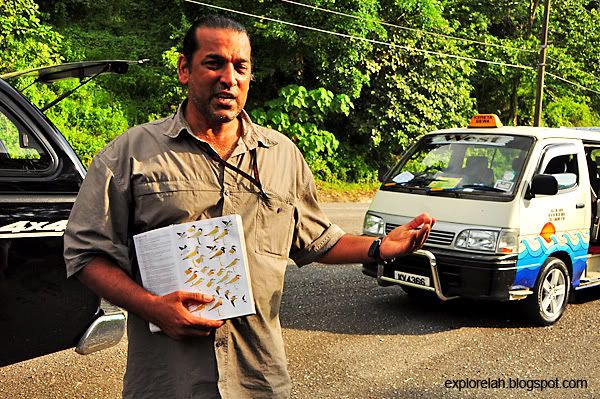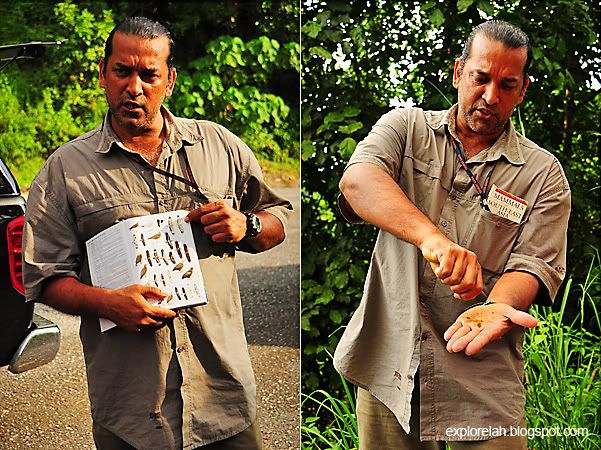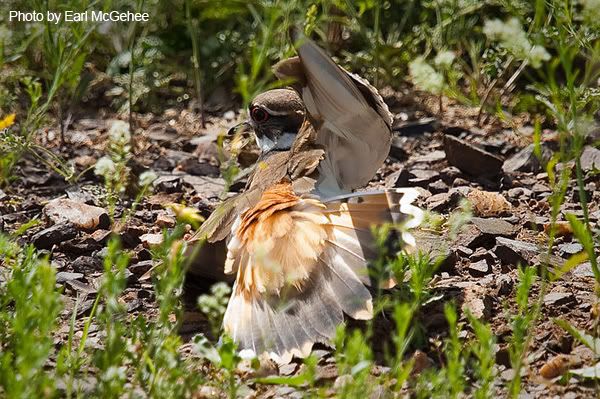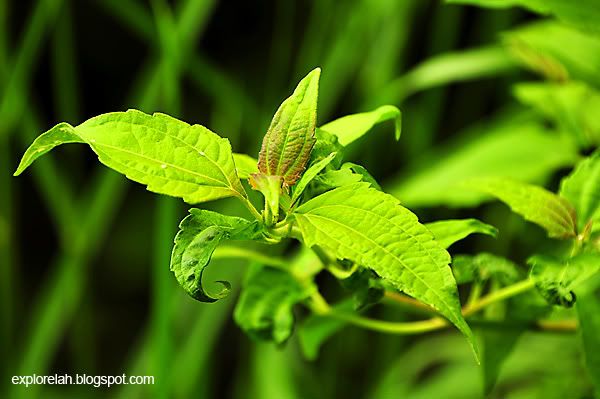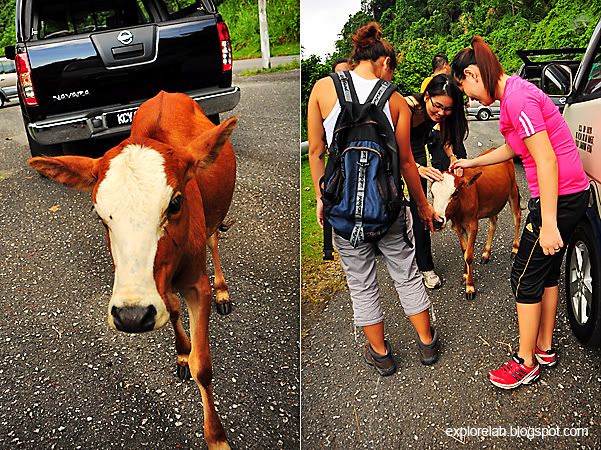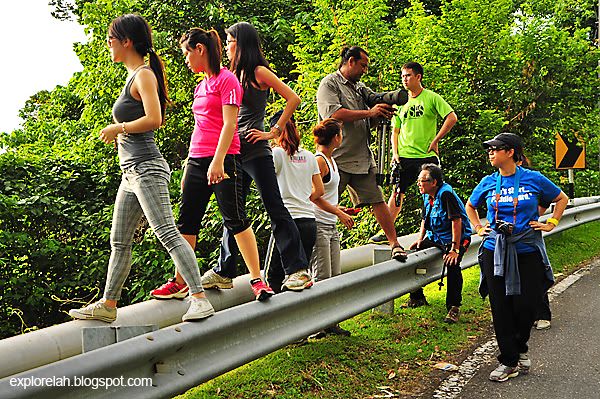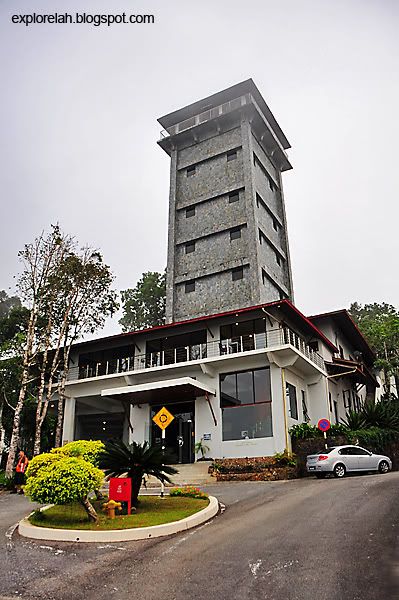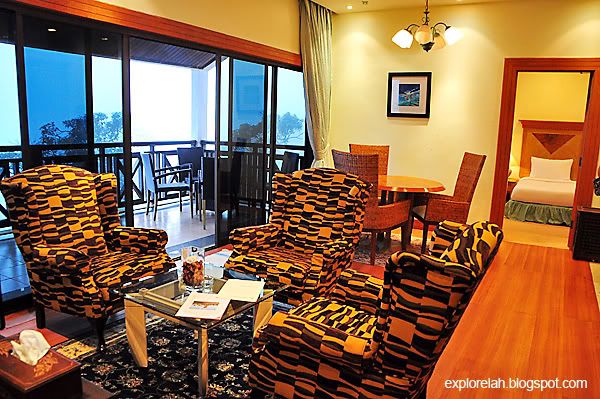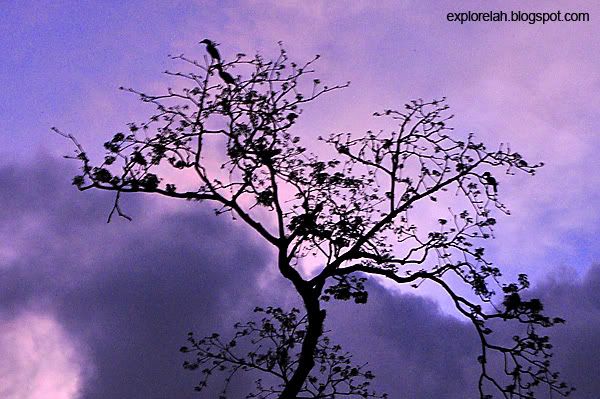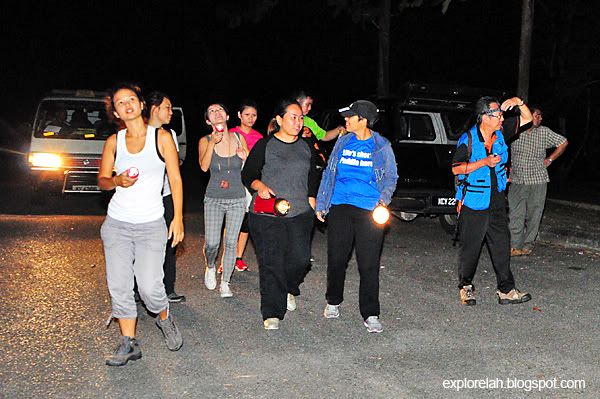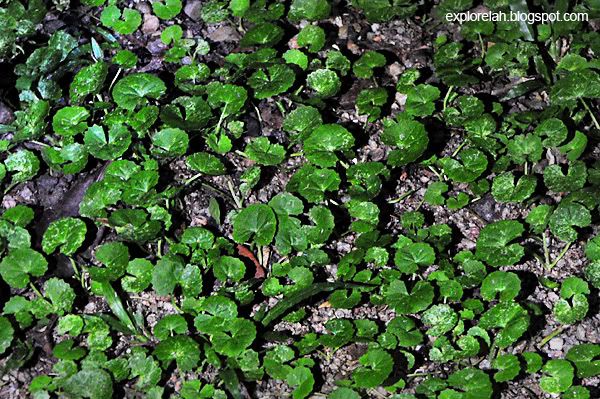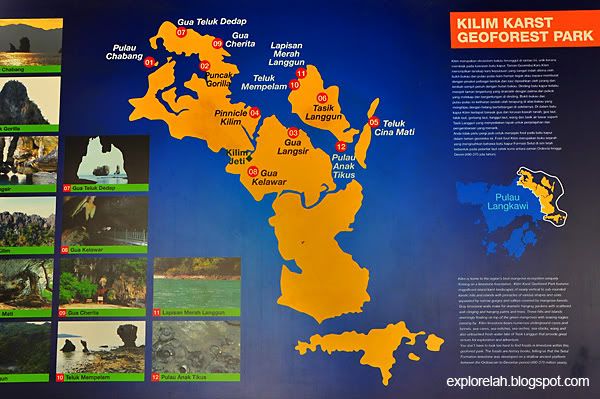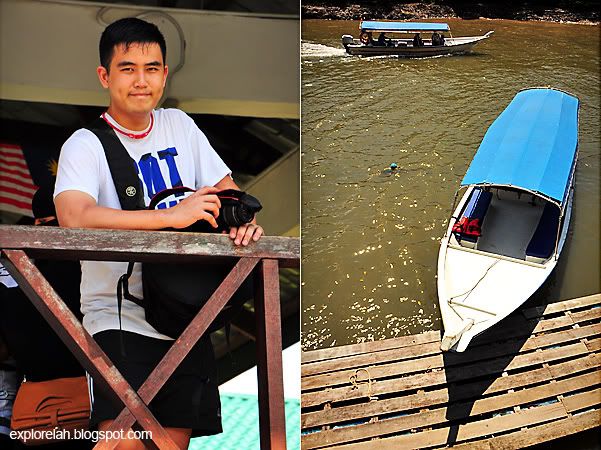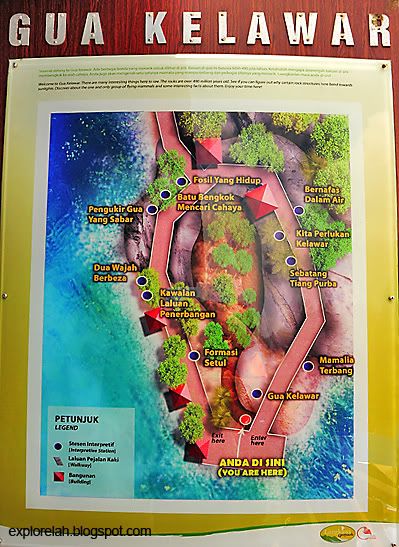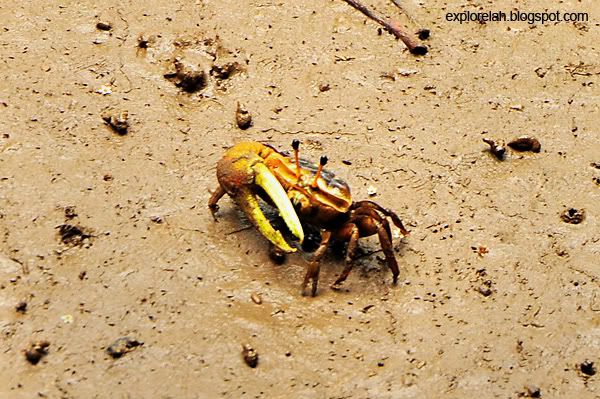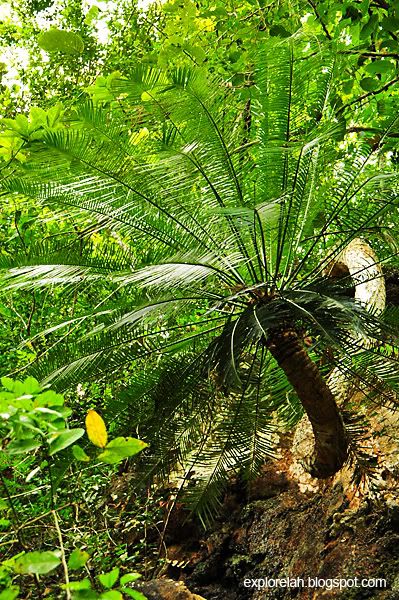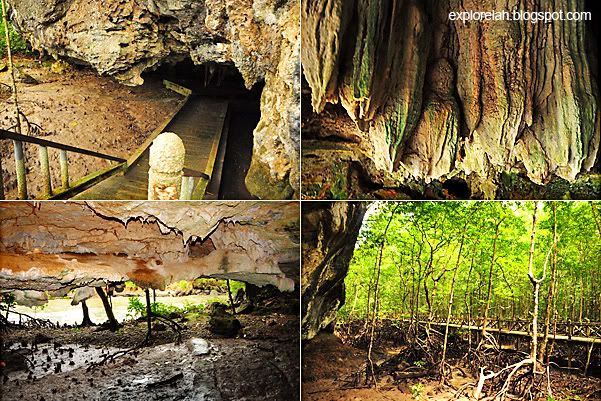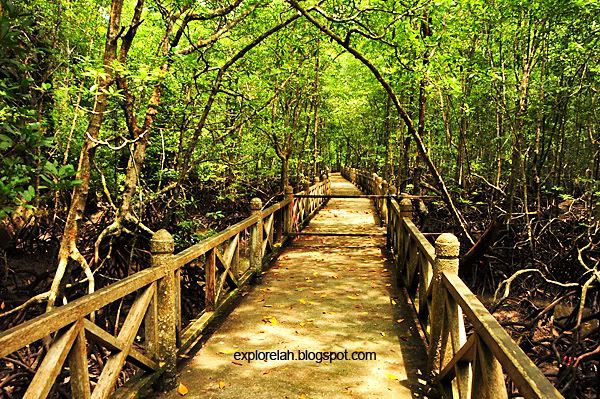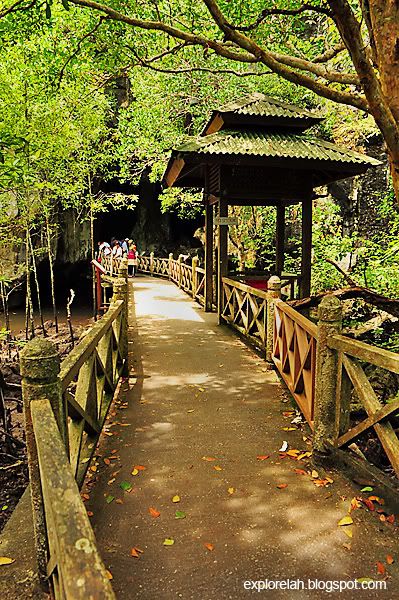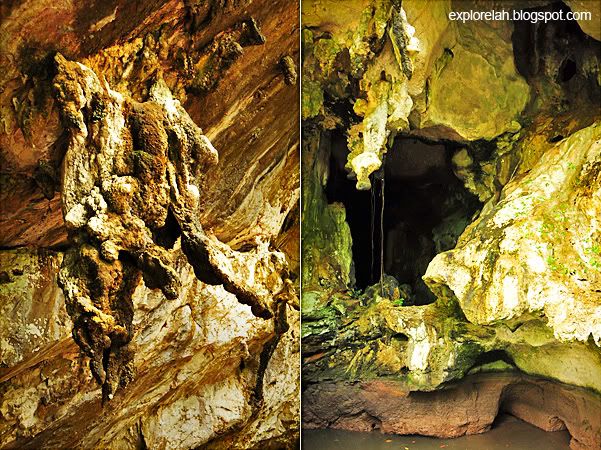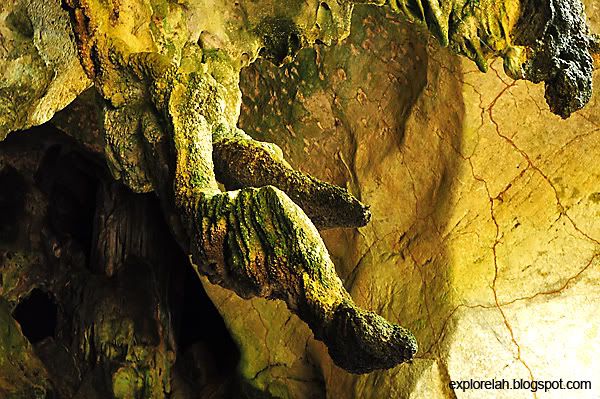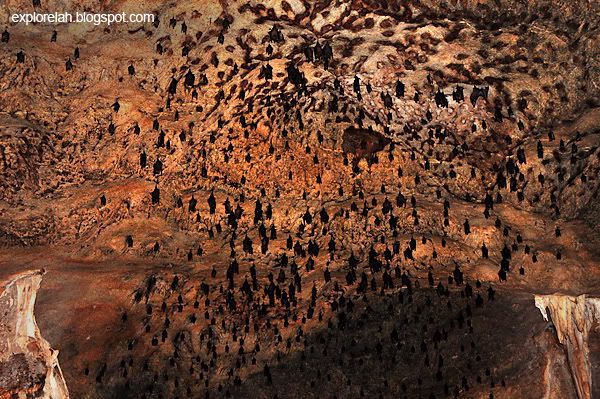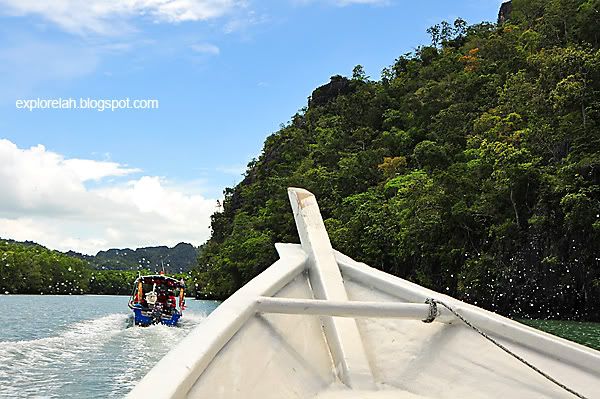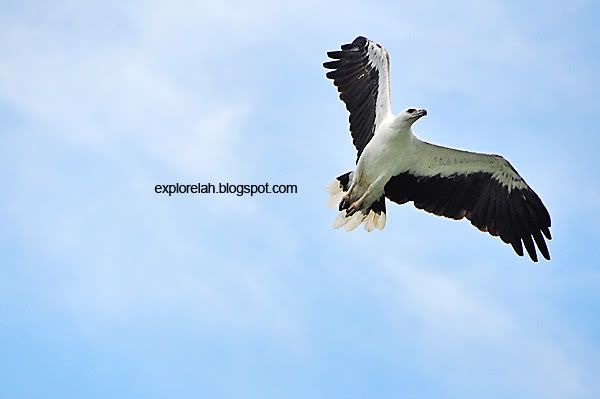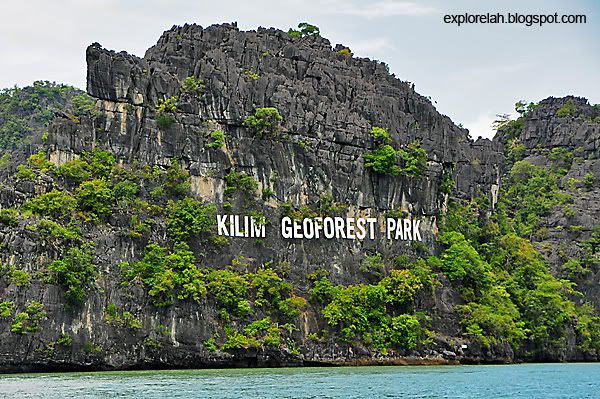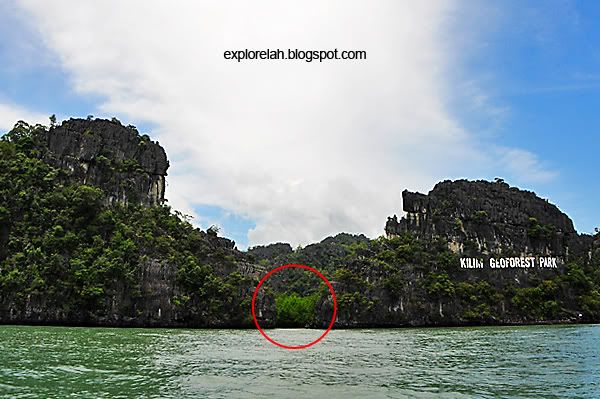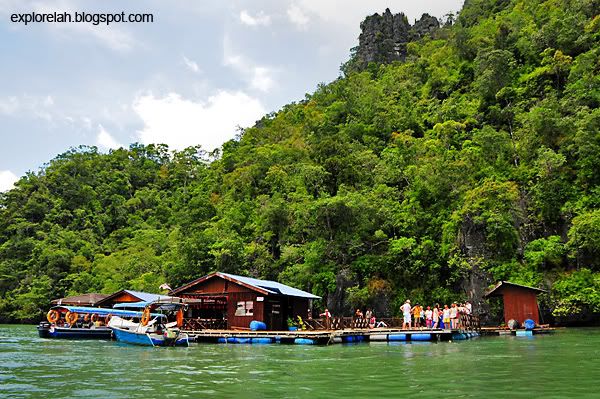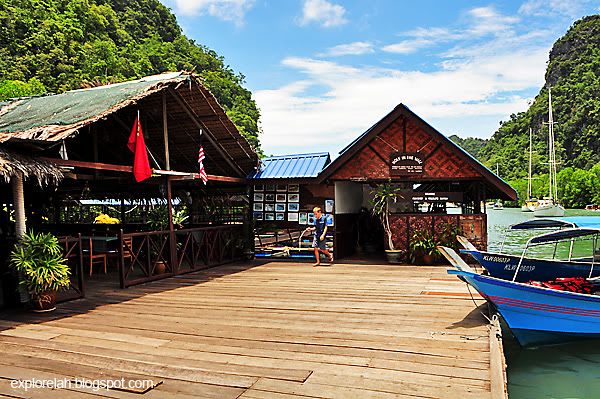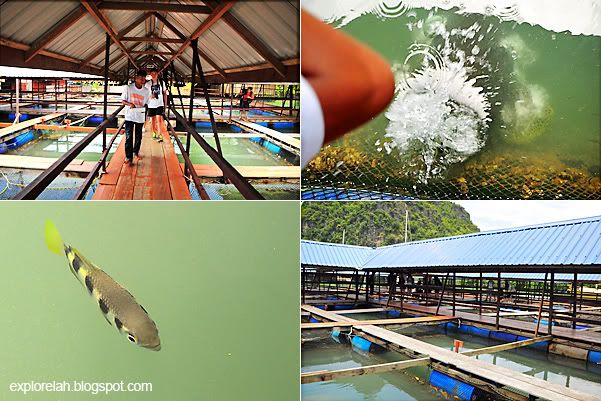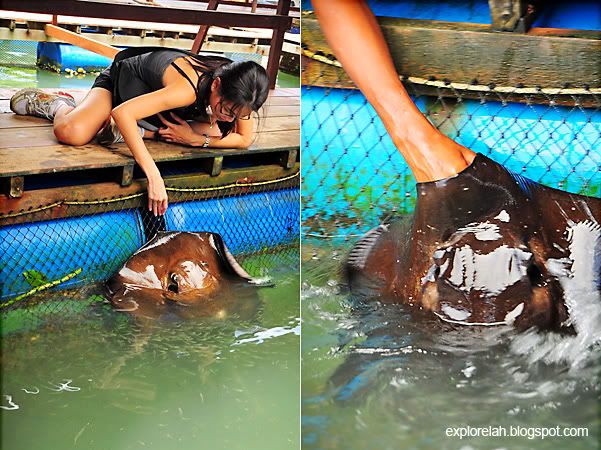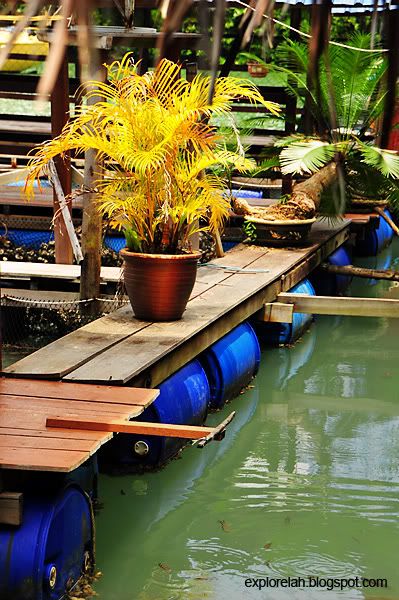Feeling refreshed and having loads of fun during a vacation is just fantastic.
But they are only temporal escapes.
In my opinion, a truly great and enduring holiday is one where we've also learnt something about the world we live in and come home with our horizons expanded. And a visit to Gunung Raya in the company of Langkawi's celebrity naturalist, Irshad Mobarak, is one of those rare occsions where learning and fun intersects.
And might I add, he's appeared in various documentaries by Nat Geo and Discovery Channel. We were so fortunate to have him personally take us on a field trip of the island's wildlife!
The plant can be found along our Singapore highways too! But don't go harvesting it for use just yet as roadside foliage contain higher levels of metal contamination from vehicular fumes. There is a love-hate relationship with this plant... loved for its medicinal and nutritional applications but loathed for its obnoxious virility in growth.
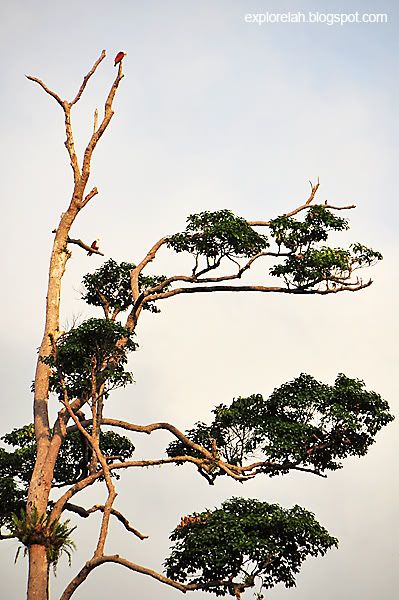 |
| The hornbills eluded us but we saw a couple of Brahminy Eagles perched on a tree top. Yo eagle, how's the view up there? :o) |
My envy of the view the eagles had was quickly satiated with our arrival on the roof of Langkawi. Standing at 881m, Gunung Raya is the tallest mountain and offers a superb panoramic view of the island.
Unfortunately, our visit met with thick fog and we could hardly see much. But the cooler temperature was a welcome from the tropical heat. I estimate that the drive up should take no more than 45 minutes without stops.
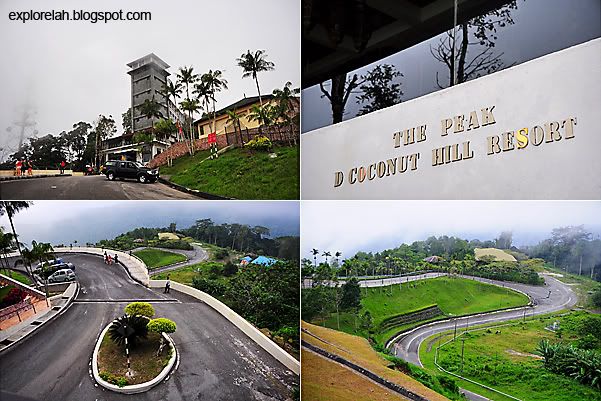 |
| At the top of Gunung Raya sits the D'Coconut Hill Resort which used to be a holiday villa of the Malaysian Prime Minister. It is now an exclusive mountaintop hotel that is an attraction in its own right. |
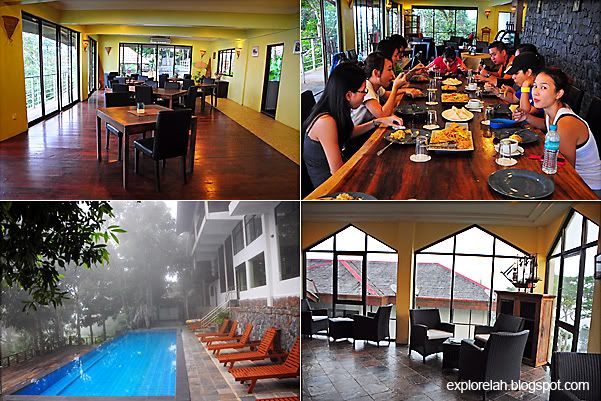 |
| Enjoying a cup of coffee or tea at the resort's contemporary cafe cum restaurant would let you get not just a caffeine fix but a high from the aerial view and crisp mountain air. |
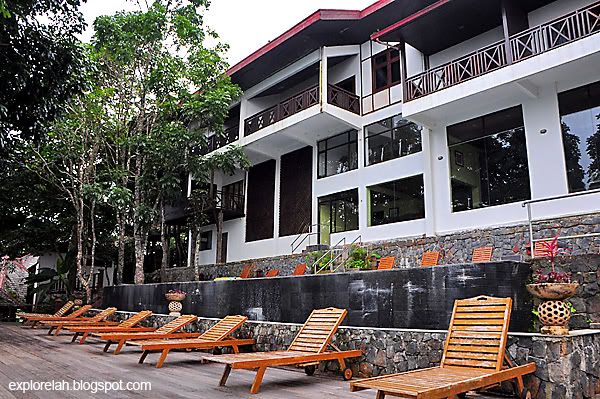 |
| Visage of one of the accomodation wings at the resort with a pool that looks through a forest canopy onto a breathtaking view of Langkawi's topography and the Andaman Sea. |
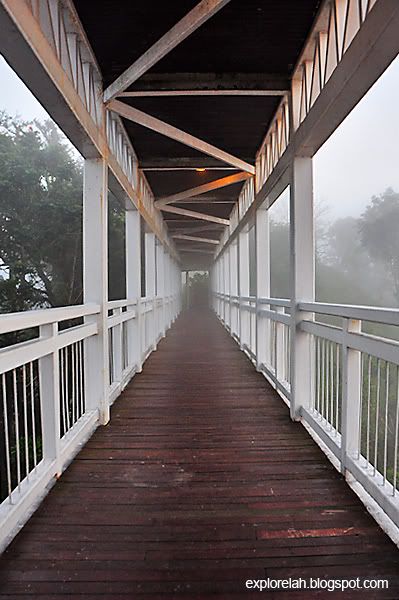 |
| If you're not here to stay, you can also pay RM10 to go atop the watchtower for an unobstructed bird's eye appreciation of the island. This is a walkway that leads to a lift at the tower. |
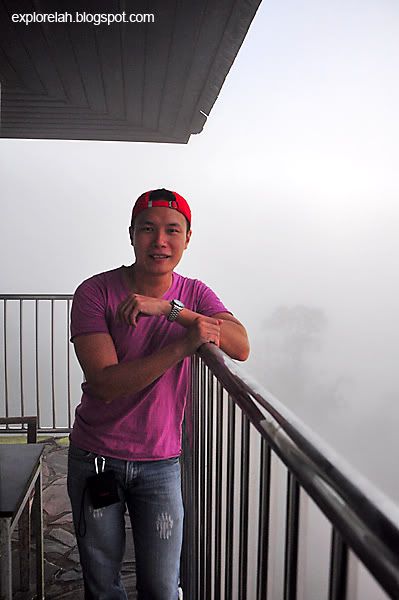 |
| Si mi mah kua boh (can't see anything) because Gaia had been smoking. But it's really cool up here and there's a small cafe. Having wine at this place would be divine! |
 |
| By the time we left D'Coconut Hill Resort, the sky was already in the middle of its evening concerto. The symphony of azure, crimson and gold gets a standing ovation from my camera. |
Can't really see them clearly but Irshad made up for it with a very touching story. The hornbills mate for life and form lifelong bonds and there was a pair that Irshad had gotten to know. One day, a gunshot rang through the forest and the female collapsed to the ground. A man in a motorcycle sped away with it.
For the next one and a half year, the remaining male hornbill would fly to the very branch on which its mate was killed and called out to it. The male hornbill had since found a new mate but occasionally, it can still be seen at that tree spot.
So, do you want your relationship to be a hornbill, or chicken?
Hunt for the Controversial Colugo
After Gunung Raya, Irshad took us on a night excursion of the forest. So exciting! I've never explored the forest at night before. Our main purpose here was to look for the elusive Colugo who, get this, is our genetic relative!
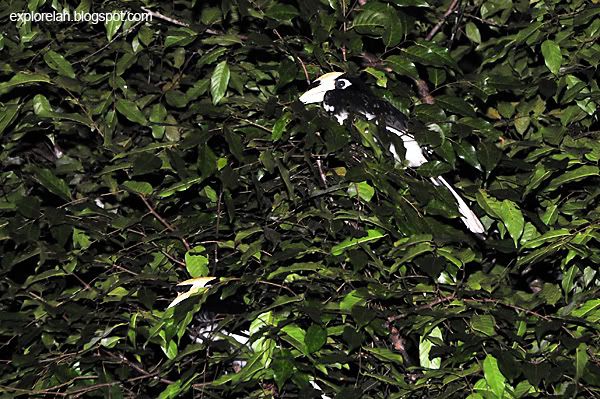 |
| Saw a pair of resting Oriental Pied Hornbills at pretty close range. Awesome! |
 |
| There's something hidden in the trees. Look carefully, can you see what it is? |
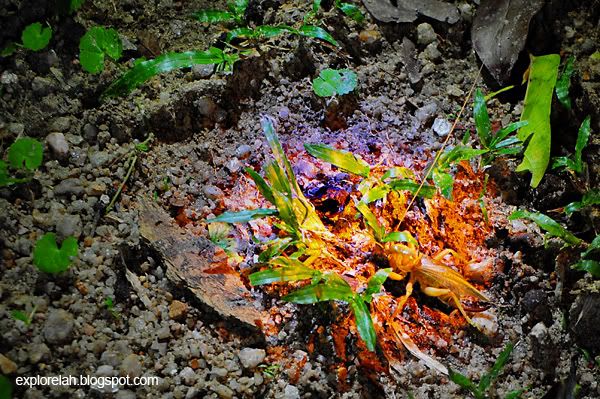 |
| Our night reverie was accompanied by cricket mating calls. Here, a female cricket was on its way to meet a date. The orangey spot was cast by a tungsten torch. |
We shone our torchlights into the trees hoping to catch an eye shine (tapetum lucidum effect) which will indicate a Colugo (pray it's not Potianak!) but to my unaccustomed eye, I saw nothing. But on the ground, I caught sight of a huge cricket, I mean a really BIG one hurrying across the forest floor. And Irshad promptly picked it up told us their story...
There are two types of male crickets - the noisy ones and quiet ones. A quiet cricket? Now, that's something new.The noisy crickets get more girlfriends but lead very short lives as they attract predators and a parasitic fly that lays eggs into their bodies. When the eggs hatch, they burst from the cricket's abdomen Alien-style.
The quiet ones would hang around the noisy ones and wait. When the loudmouths get busy with a mate, they stop cricketing but their calls would've attracted other females to come their way. At this point, the quiet ones let out a small whimper. Thinking that its the male they were after, the females mate with the cheaters.
The quiet male cricket may not get an orgy, but it gets to live very long. So what do we learn from the male crickets? Promiscuity kills ya faster!
From his glowing account of the medicinal benefits of this herb, I wanted to just get down on all fours and start munching on them! The plant has a long history as a traditional medicine in the Chinese, Indonesian, Vietnamese, Thai and Ayurvedic systems of healing which modern science is beginning to verify. A drug for cardiovascular diseases made from the active constituents of the Indian Pennywort may soon find its way into our Western pharmacies soon.
According to clinical studies, the herb is a mild adaptogen which has the ability to regulate stress and act as a sort of tonic for general health like ginseng, has anti-microbial efficacies, possesses anxiolytic properties (mild tranquilising effects helpful in combating anxiety disorders), and also an aphrodisiac! Plus it can stimulate collagen production so it is a great ally for age-defying skin. That's a green fountain of youth right beneath my feet!
 |
| Image of Colugo with young clinging to its body taken from Penn State Eberly College of Science archive. Gestation takes 60 days and the infants live with the parent for about six months. |
Nicknamed the Flying Lemur of Southeast Asia, the misnomer is far-fetched because the Colugo neither flies (it glides) nor is it a lemur. When it was first discovered, the nocturnal creature was classified under the order of the primates. Humans are in the primate order. But it was later classified under the order of the bats because it has skin for wings. Colugos are not flying squrriels or flying foxes.
But later DNA mapping found that it is closer to the primate genome. In other words, we humans are relatives with the Colugo! This animal has been classified into a new order own its own (Dermoptera) with two species - the Sunda Colugo and the Philippine Colugo. They can be found in Singapore too at Bukit Timah Nature Reserve, MacRitchie Reservoir and I believe other forested areas of our tiny red dot.
While I was disappointed at not having the opportunity to catch the Colugo with my own eyes, my eyes have been opened to a lot more about the romance, survival tactics and healing powers of nature. For a truly rewarding experience of Langkawi's wildlife, you can book tours with Jungle Walla where Irshad is the resident naturalist. It's totally worth it,.
